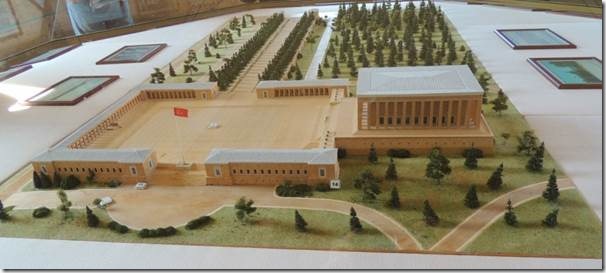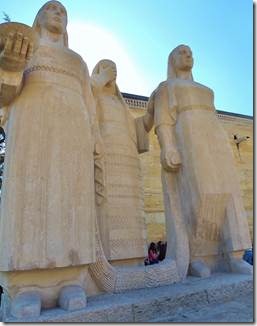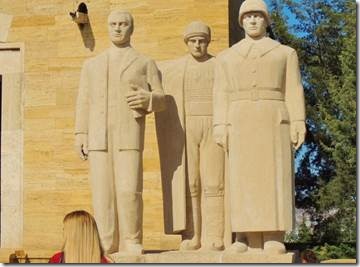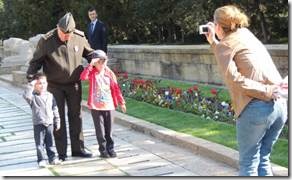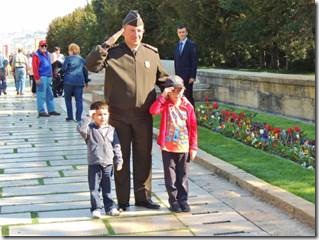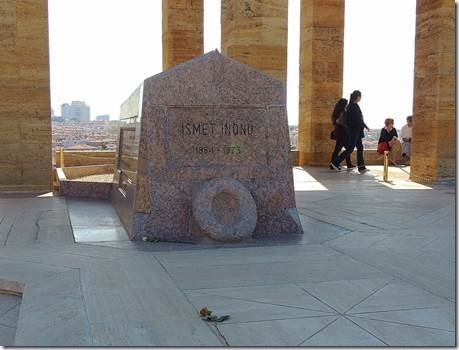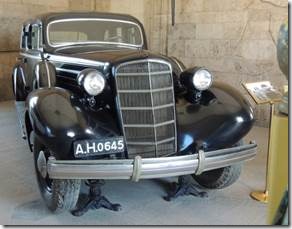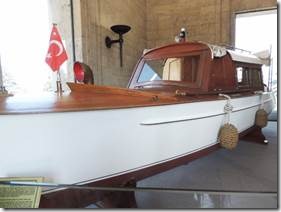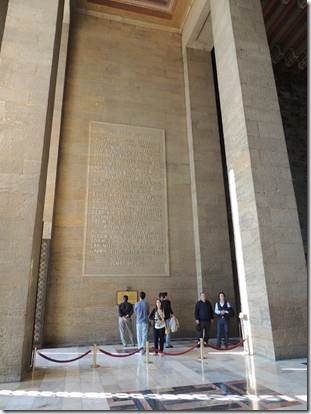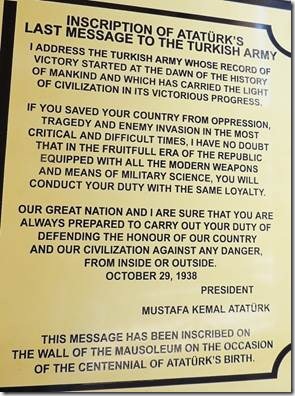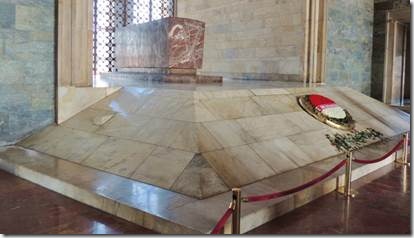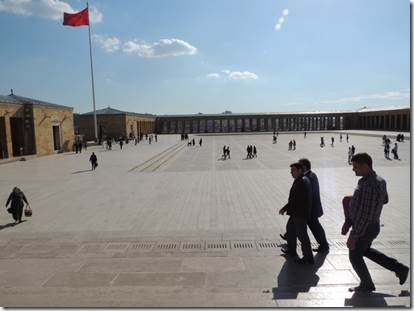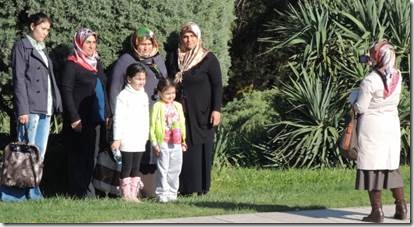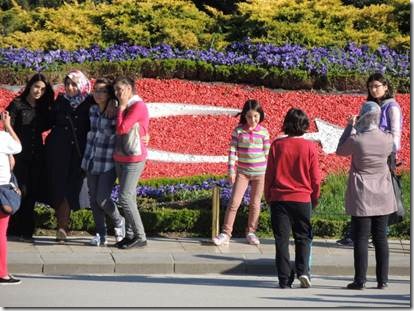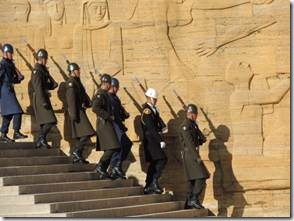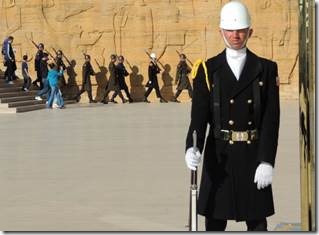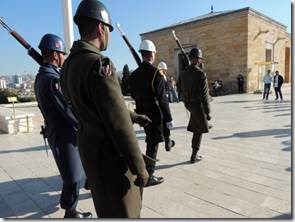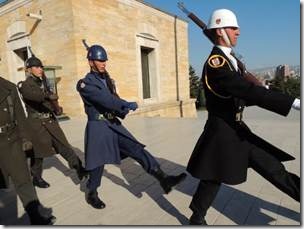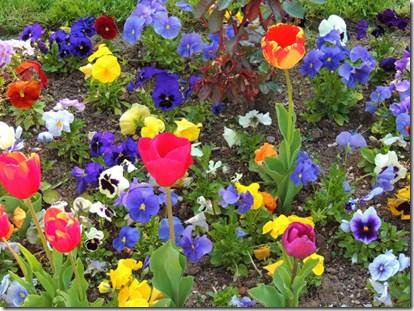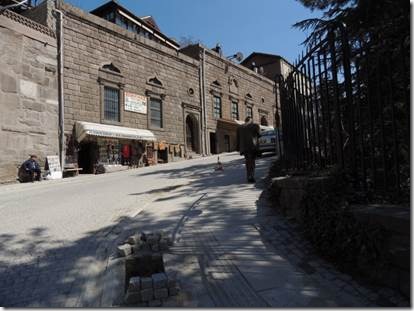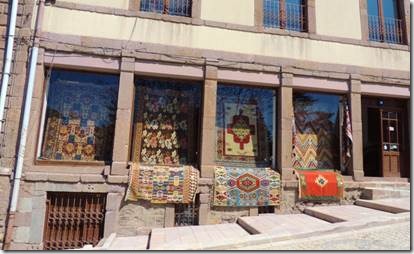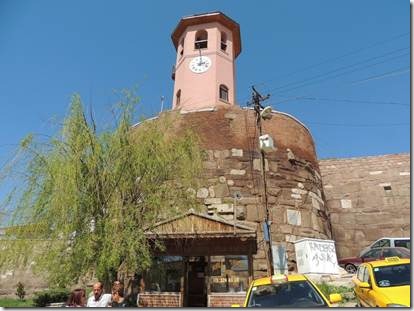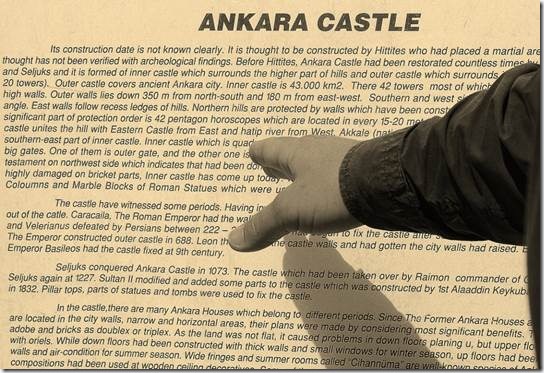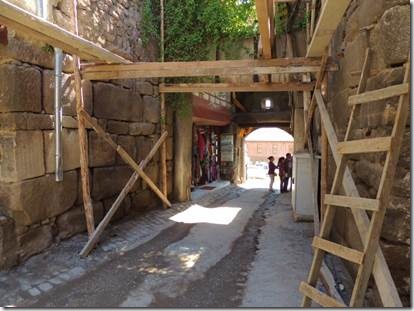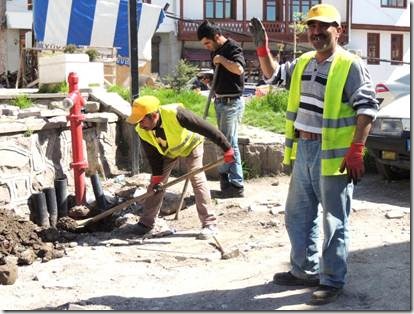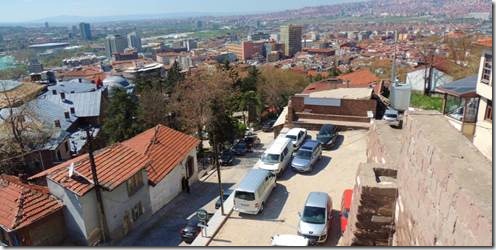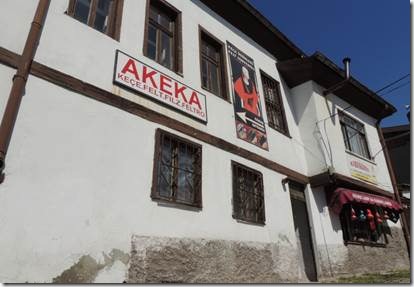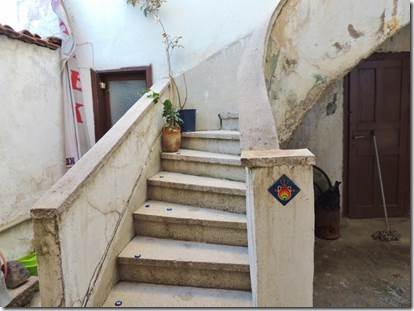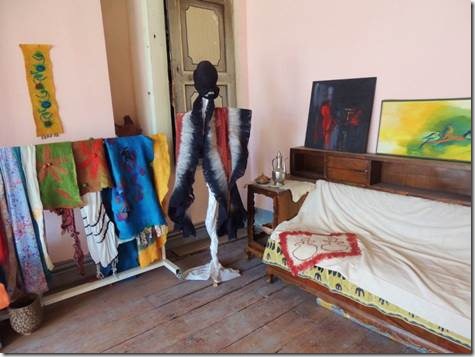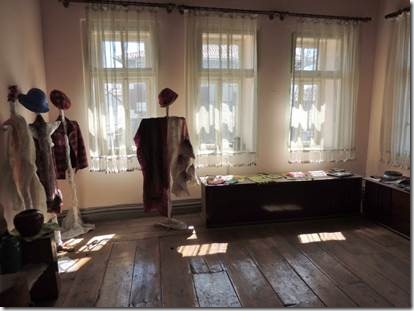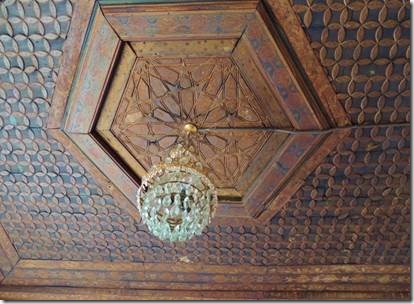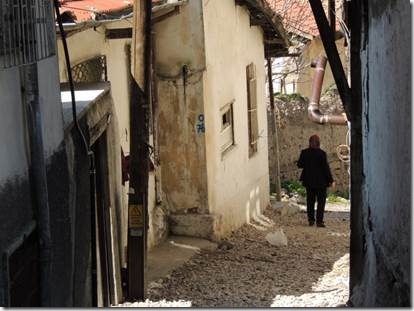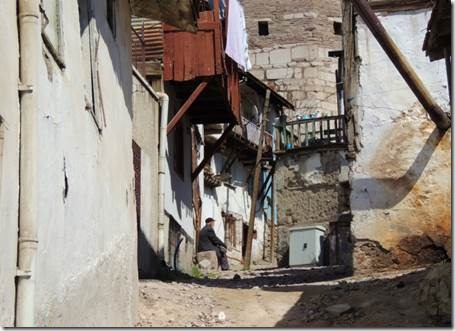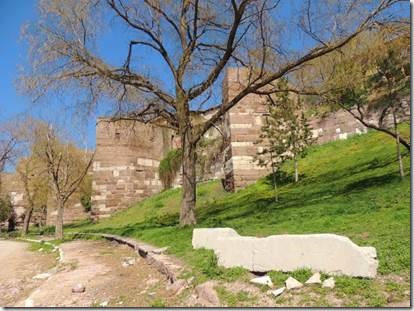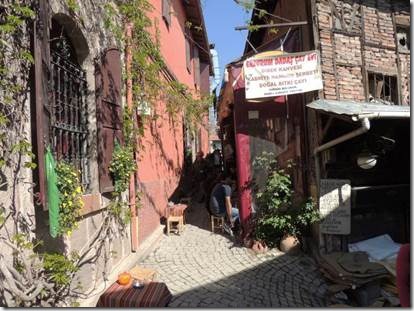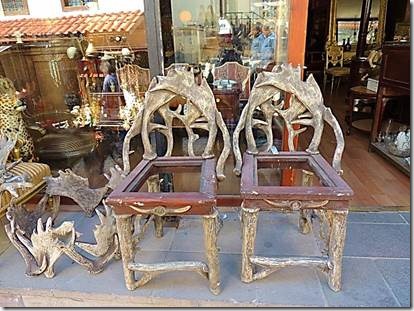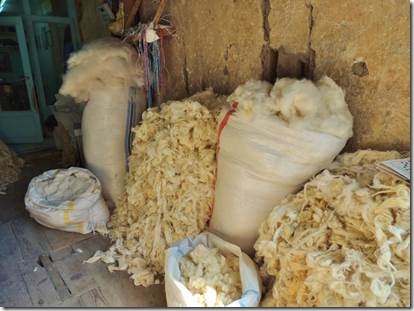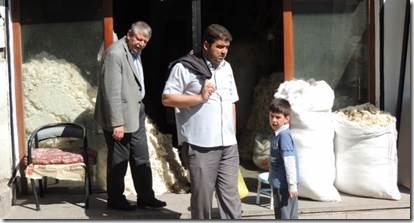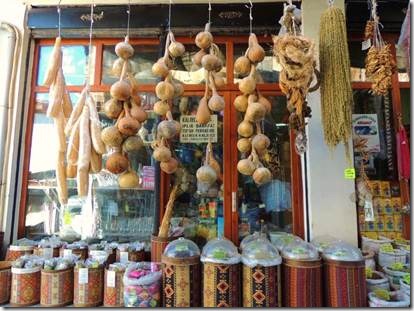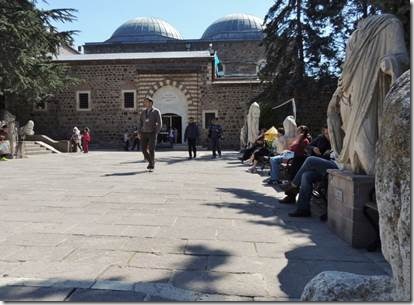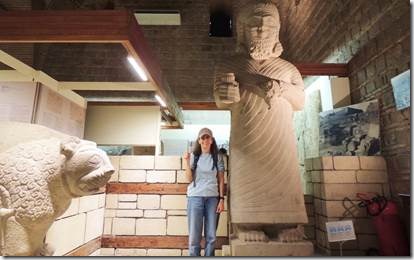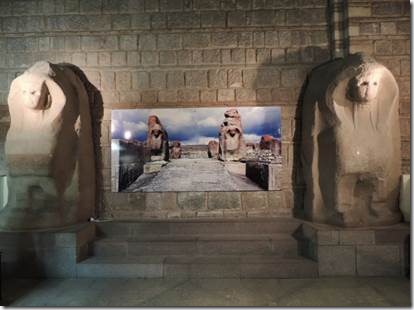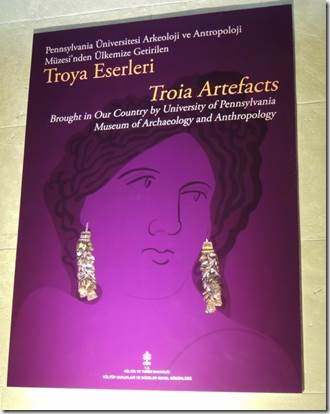Merhaba
Mustafa Kemal Atatὒrk is the most famous personage in Turkey and I’m guessing mostly none of you know much/anything about him. This email is all about Atatὒrk.
Ru
Ankara Trip Day 1: Email # 2
|
Our last stop of the day was the Atatürk mausoleum and museum complex. Every town in Turkey has at least one statue of Atatὒrk. He’s the Turkish George Washington, Thomas Jefferson, Abraham Lincoln, John Kennedy and Franklin Roosevelt rolled into one. (With maybe a bit of Stalin and Mao thrown in too.) “Atatürk was a Turkish nationalist leader and founder and first president of the republic of Turkey. Mustafa Kemal Atatürk was born in 1881 in Salonika (now Thessaloniki) in what was then the Ottoman Empire. His father was a minor official and later a timber merchant. When Atatürk was 12, he was sent to military school and then to the military academy in Istanbul, graduating in 1905. In 1911, he served against the Italians in Libya and then in the Balkan Wars (1912 – 1913). He made his military reputation repelling the Allied invasion at the Dardanelles in 1915. In May 1919, Atatürk began a nationalist revolution in Anatolia, organizing resistance to the peace settlement imposed on Turkey by the victorious Allies. This was particularly focused on resisting Greek attempts to seize Smyrna and its hinterland. Victory over the Greeks enabled him to secure revision of the peace settlement in the Treaty of Lausanne. In 1921, Atatürk established a provisional government in Ankara. The following year the Ottoman Sultanate was formally abolished and, in 1923, Turkey became a secular republic with Atatürk as its president. He established a single party regime that lasted almost without interruption until 1945. He launched a programme of revolutionary social and political reform to modernize Turkey. These reforms included the emancipation of women, the abolition of all Islamic institutions and the introduction of Western legal codes, dress, calendar and alphabet, replacing the Arabic script with a Latin one. Abroad he pursued a policy of neutrality, establishing friendly relations with Turkey’s neighbours. In 1935, when surnames were introduced in Turkey, he was given the name Atatürk, meaning ‘Father of the Turks’. He died on 10 November 1938. http://www.bbc.co.uk/history/historic_figures/ataturk_kemal.shtml The question is how much longer Mustafa Kemal can remain on that pedestal. To the people of his country, Atatürk—the sobriquet means “father of the Turks”—has been both a national hero and an ideology, bolstered by decades of indoctrination in the schools and by his ubiquitous image in the form of busts, portraits, statues, figurines, T-shirts, currency, key chains, and even iPhone cases. A reformist Ottoman Army general, he led an independence struggle against the invading Greek, French, and Italian armies after the First World War, culminating in the establishment of a modern republic in 1923. Under Mustafa Kemal’s leadership, the young republic made a clean break from its Ottoman past nearly nine decades ago, ditching the caliphate for a secular regime and turning away from the empire’s former Arab territories in favor of an anti-clerical, pro-Western vision that became known as Kemalism. He pushed for women’s suffrage, decreed the alphabet’s conversion from Arabic to Latin overnight, established parliamentary government, declared war on Islamic zealotry long before jihadism became a global concern, even banned the Ottoman fez in favor of European-style hats. Turkish schoolbooks today summarize the changes he imposed as “the Atatürk revolutions.” Nevertheless, Mustafa Kemal’s staunchly secularist legacy is now being challenged by a new Turkish strongman, Recep Tayyip Erdogan. Free at last to espouse and promote his conservative Muslim faith publicly, the prime minister embodies the political aspirations of millions of Turks who have been alienated from the military-backed secular establishment for generations: the rural folk, the urban poor, conservative Muslim clerics, and the rising religiously conservative business classes. While studiously avoiding direct confrontation with Atatürk’s Westernized ideals, Erdogan and other pro-Islamist leaders of the ruling Justice and Development Party (AKP) have inaugurated an era of deep political transformation. With the party’s encouragement, many Turks have come to regard Kemalism as an outmoded ideology unsuited to the needs of present-day Turkey’s dynamic society. “I don’t know if Atatürk himself is dead,” says liberal academic and commentator Mehmet Altan. “But Kemalism will eventually die, as Turkey democratizes.” Altan has argued for years against the Kemalist doctrine, calling instead for the creation of a “second republic” that would be less centralized, more inclusive of Kurds and Islamists, and less rigid in its secular and nationalist policies. That’s what’s already happening as the Erdogan government dismantles the Kemalist establishment. The military, once the country’s most powerful political force and the self-proclaimed guardian of secularism, has been relegated to the barracks and publicly reprimanded for the series of coups that have stunted democracy’s growth since Atatürk’s death. Religious conservatism is on the rise, and Ankara has turned its attention away from the country’s longstanding bid for European Union membership, seeking instead a more prominent role in the Middle East and the former Ottoman lands. Vestiges of the old Kemalist order—the headscarf ban on university campuses, restrictions on use of the Kurdish language, Soviet-style commemorations held in stadiums on national days—have nearly disappeared. And yet liberal democrats like Altan are not happy. Many feel that Erdogan’s government has lost its reformist drive, becoming authoritarian and single-mindedly Islamic instead. Intellectuals who once supported Erdogan against the military now complain about his efforts to control the media, his intolerance for dissent, and his halfhearted concessions to Kurdish demands. “Politics in Turkey has always been a struggle between the barracks and the mosque,” says Altan. “Because we never had a proper capitalist class, the Army represented the bourgeoisie, and the mosque represented the underprivileged. With AKP, we thought a democracy would emerge out of the mosque. But instead what we got was simply the revenge of the mosque.” A year ago Altan finally became one of the many journalists who have lost their jobs for criticizing Erdogan. It’s the same penalty commentators used to incur for finding fault with Atatürk. Altan grieves for the fading of Turkey’s European dreams. Bringing European standards to Turkey’s democracy was the only possible solution for the conflict between the secularists and the Islamists, he says. “But the EU reforms have stopped, and the government’s Islamic reflexes are more obvious now, making the division even sharper.” |
|
Model of the Atatὒrk complex. Lonely Planet review for Anıt Kabir The monumental mausoleum of Mustafa Kemal Atatürk (1881–1938), the founder of modern Turkey, sits high above the city with its abundance of marble and air of veneration. You enter via the Lion Road, a 262m walkway lined with 24 lion statues – Hittite symbols of power used to represent the strength of the Turkish nation. The path leads to a massive courtyard, framed by colonnaded walkways, with steps leading up to the huge tomb on the left. To the right of the tomb, the extensive museum displays Atatürk memorabilia, personal effects, gifts from famous admirers, and recreations of his childhood home and school. Just as revealing as all the rich artifacts are his simple rowing machine and huge multilingual library, which includes tomes he wrote. Downstairs, extensive exhibits about the War of Independence and the formation of the republic move from battlefield murals with sound effects to over detailed explanations of post-1923 reforms. At the end, a gift shop sells Atatürk items of all shapes and sizes. As you approach the tomb itself, look left and right at the gilded inscriptions, which are quotations from Atatürk’s speech celebrating the republic’s 10th anniversary in 1932. Remove your hat as you enter, and bend your neck to view the ceiling of the lofty hall, lined in marble and sparingly decorated with 15th- and 16th-century Ottoman mosaics. At the northern end stands an immense marble cenotaph, cut from a single piece of stone weighing 40 tons. The actual tomb is in a chamber beneath it. It takes around two hours to see the whole site. It is virtually a pilgrimage site, so arrive early to beat the crowds; school groups frequently drop by midweek, especially in May, June and September. http://www.lonelyplanet.com/turkey/central-anatolia/ankara/sights/monument/ant-kabir |
|
Statues illustrate the sterotypical occupations of Turkish women and men supposedly showing the strength of Turkey’s people. |
|
Whoever this man was, he had security with him as he walked along having his photo taken with visitors. I think Randal, former Marine that he is, was tempted to have his photo taken with this officer too. |
|
The tomb of the second president of Turkey. “İsmet İnönü, (born Sept. 24, 1884, Smyrna, Ottoman Empire—died Dec. 25, 1973, Ankara), Turkish army officer, statesman, and collaborator with and successor to Mustafa Kemal Atatürk as president of the Turkish Republic. Identified with one-party rule between 1939 and 1946, he later emerged as a champion of democracy. “ http://www.britannica.com/EBchecked/topic/288786/Ismet-Inonu |
|
A car and boat that had belonged to Atatὒrk were housed in a small wing of the complex. |
|
The main museum with exhibits illustrating the history of Turkish independence didn’t allow photos. Photos were allowed in the building that houses the tomb. |
|
Marble cenotaph over Ataturk’s tomb There were so many people posing for photos directly in front that I could only get this side view. |
|
I like the contrast between the 3 men and the lone woman with her several bags. |
|
I used the long lens to get this photo and only when I was writing this email did I notice all of the people in both groups were female. Now I wonder why. All women with various types of dress; some with their heads covered and some not. |
|
We were there at closing so saw the changing of the guard. |
|
I have to say that I think our “marching” looks less militaristic than this type of marching. It would be interesting to know why some armies march one way and others differently. |
|
On a more peaceful note, there were lots of lovely flowers. |
|
Then it was back to the hotel for a short rest before dinner. Randal and I had a time figuring out how to get our shower to work. There were so many optional buttons for lights or radio or water jets. I just wanted a plain old shower which we finally figured out. I had planned to take a photo of the thing but forgot. When we stayed in the same hotel our last night our room had a less fancy shower but it was much easier to get the water to do what you expected it would do. |

